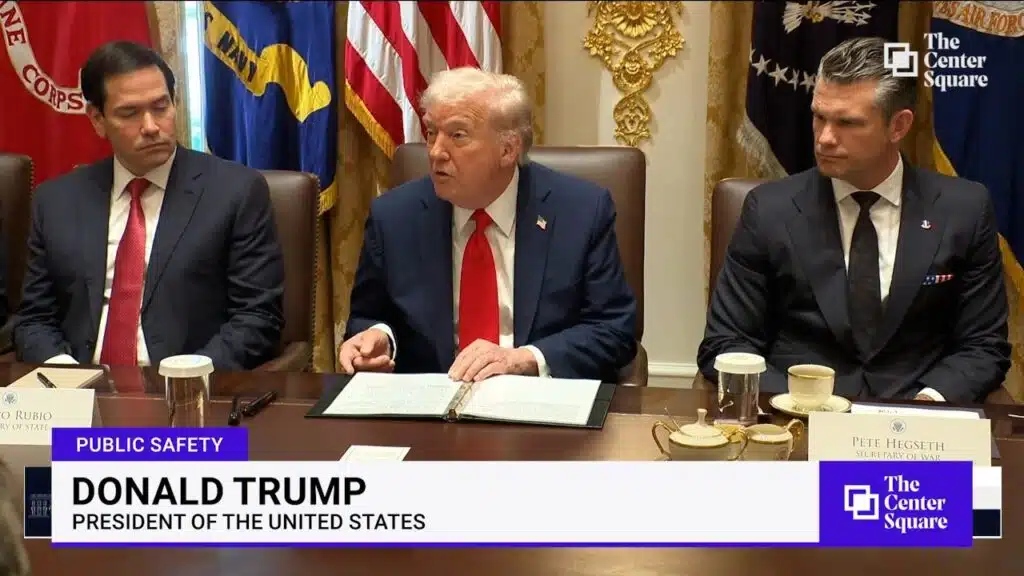
Virginia’s Regulatory Reforms Are Role Model for Other States
While the Biden administration’s Washington bureaucrats continue to push for heavy regulation of everything from power plants to ceiling fans, Americans on the other side of the Potomac River are poised to reap the benefits of an administrative accountability overhaul undertaken by Virginia Gov. Glenn Youngkin.
The regulatory reforms come from the Virginia Office of Regulatory Management’s implementation of Youngkin’s Executive Order 19. In June 2022, Youngkin set out this order to make his state’s regulatory regime more efficient, less burdensome and, above all, accountable to the people of the commonwealth of Virginia.
Executive Order 19 established the Virginia Office of Regulatory Management to oversee all Virginia regulatory procedures, and tasked the office with implementing a 25% reduction in regulatory burdens, ensuring a more transparent regulatory process, and enforcing new cost-benefit analysis standards for all new regulations.
Those reforms might seem like commonsense accountability checks on the surface. Indeed, the federal administrative apparatus has analogous institutions and policies: Virginia’s Office of Regulatory Management is modeled on the federal Office of Information and Regulatory Affairs (OIRA). Further, then-President Donald Trump’s Executive Order 13771 aimed to encourage regulatory relief much like Virginia’s 25% rule. The Administrative Procedure Act, meanwhile, requires agencies to take comments from the public into account in the rule-making process. And federal agencies must weigh the costs and benefits of their actions, with stricter requirements for rules that OIRA deems economically significant.
However, by matching the commonsense scrutiny imposed at the federal level, Virginia is poised to have some of the strongest administrative accountability policies of any state in the union.
For example, Virginia’s Office of Regulatory Management is one of the few OIRA-equivalents in the country. Such an agency is a minimum for preventing agencies from issuing regulations that are unnecessary or unauthorized by elected representatives of the people, but only 10 other states have comparable agencies of the same level whose sole function is to watch over the regulatory process.
And even among those states, Virginia’s regulatory oversight regime is relatively unique, in that it will be involved in rule-makings from the very first decision to regulate and will require cost-benefit analysis of all regulations proposed. Just three other state regulatory oversight agencies can boast this model: Arizona, California, and Colorado.
That means that Virginia’s Office of Regulatory Management will review and provide feedback on all regulations from proposal to promulgation, rather than simply intervening after an agency has already proposed a rule. While Virginia is laudable for leading the way in this field, it’s disappointing that few other states have implemented this basic measure for regulatory accountability.
Further, Youngkin’s order for a 25% reduction in regulatory burdens across the board—which follows the same model as Trump’s Executive Order 13771—is another regulatory reform desperately needed in most states.
Targeting regulatory burden is a crucial move to ensure that regulatory reductions actually achieve their aim of relieving the public of unnecessary regulatory impact. For example, as Office of Regulatory Management Deputy Director Reeve T. Bull notes, if an agency reduces the number of hours required for a given license by one-third, “the agency […] has not eliminated any regulatory restriction, but it has significantly reduced a regulatory burden.”
A regulatory-relief requirement focused just on the number of regulations would not encourage this kind of relief, as it would allow agencies to game the system while leaving the heaviest burdens in place.
The Office of Regulatory Management’s focus on the reduction of regulatory requirements, as opposed to the number of regulations, means that agencies will receive “partial credit” for showing that their actions will reduce costs. That means that agencies will be empowered to both repeal unnecessary regulations and reduce the burden of useful regulations where appropriate.
For Virginians, that means a stronger economy that benefits workers, consumers, and small businesses alike.
Other states should follow Virginia’s example and cut red tape, but when they do, they should target regulatory burden, not just the number of regulations.
Perhaps most important of all the Virginia reforms, however, is the strict requirement set for cost-benefit analysis. Even requiring a cost-benefit analysis is relatively rare at the state level, but Virginia’s is poised to ensure rigorous analyses of proposed regulations.
First, it avoids loopholes that agencies sometimes exploit to try to get around regulatory-impact requirements, requiring cost-benefit analyses even for regulations exempt from Office of Regulatory Management review and for guidance documents — statements of regulatory norms that, while legally nonbinding, are often used by agencies to bully businesses and individuals into following regulations that they couldn’t issue otherwise.
Second, it includes a comprehensive guide that agencies must follow in their cost-benefit analyses, which details the thorough cost calculation that the Office of Regulatory Management expects of agencies.
Notably, the guide explains that agencies must consider indirect costs, such as market distortion and distributional effects on small businesses, in their analyses. A full examination of the costs of a regulation means that the Virginia government will be accountable to its residents, putting forward smart, cost-effective regulations only when the goods obtained clearly outweigh the negatives incurred.
It will, however, be very important that the Office of Regulatory Management enforces its cost-benefit standards rigorously, lest rogue agencies try to promulgate poorly analyzed rules, like so many federal agencies do.
For example, a rule proposed by the federal Office of Personnel Management attempting to reduce the gender pay gap in federal salaries included a cost estimate that failed to account for the cost of raising wages to close the pay gap, which could amount to billions of dollars per year in additional spending. The Department of Energy, meanwhile, is poised to make everything from dishwashers to light bulbs more costly and less functional against the wishes of consumers, especially the poor and working class.
These examples are no outliers: Over the past six months, The Heritage Foundation’s comments on federal regulations have revealed that many important proposed federal rules have severely defective cost estimates.
Virginia’s Office of Regulatory Management must strictly enforce its cost-benefit analysis standards at all stages of the rulemaking process to avoid wasting the public’s time having them comment on unreasonable rules devoid of thorough accounting for costs.
Ultimately, all Americans deserve government that is accountable to the people and that takes seriously its obligation to regulate in a reasonable, cost-effective, and transparent manner. Current state administrative regimes are, too often, nothing like that.
The reforms undertaken by Youngkin and Virginia’s Office of Regulatory Management are a promising start to rein in the regulatory overreach that continues to hamper Americans’ access to the good life.


